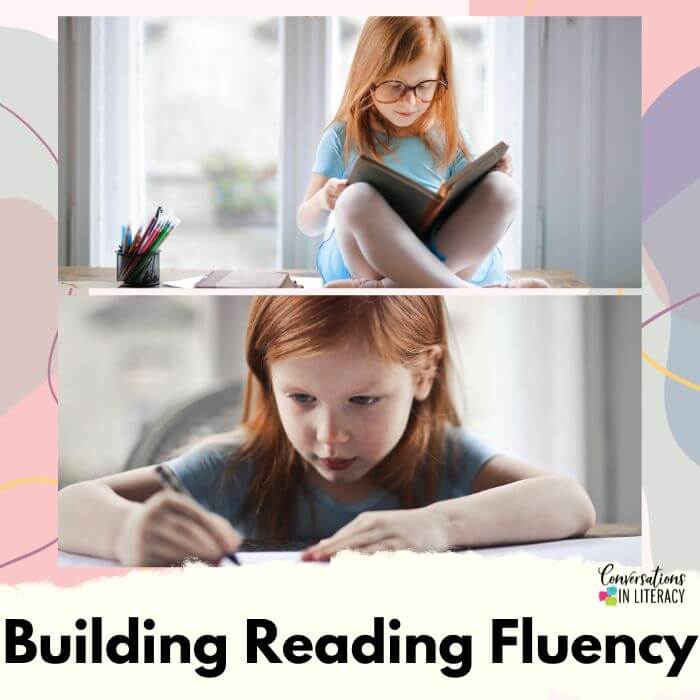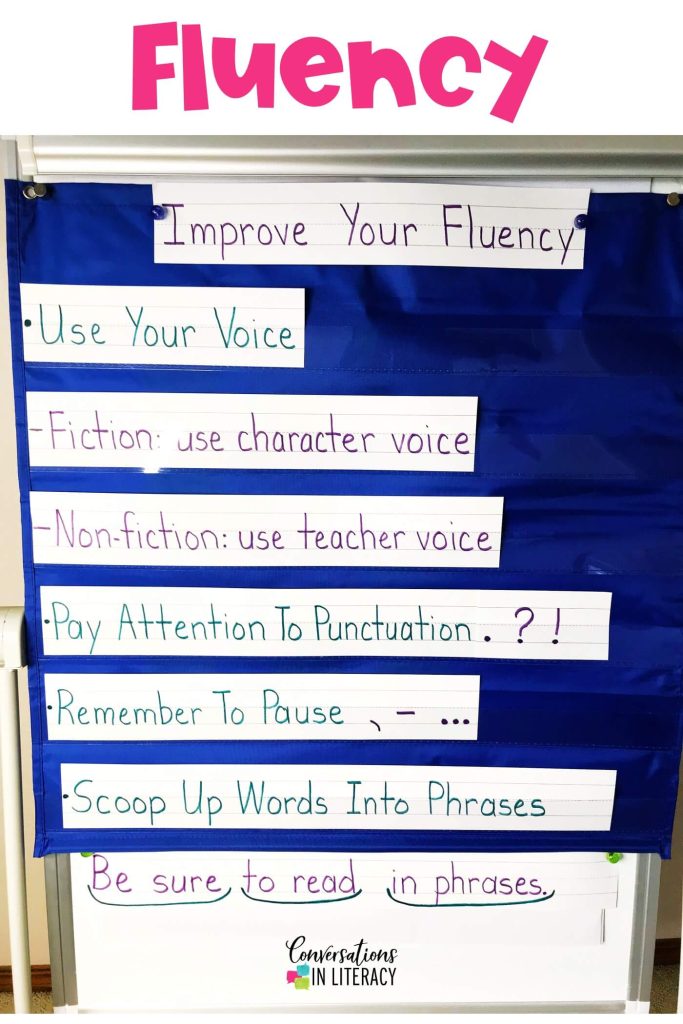
Improving Reading Fluency – Have you ever struggled with teaching reading fluency? If so, you’re not alone. Reading fluency, or the ability to read text accurately, quickly, and with expression, is a skill that can be challenging to teach and challenging for students to master.
Fortunately, with these five strategies to strengthen fluency, you can help your students become more fluent and become a more confident and natural reader! And you, as a teacher, can find that teaching fluency can be fun. 😁 If you missed our other posts on fluency you can click here and here to catch up!
Character Voices

Part of reading fluency is using expression and a fun way to put this into practice is called Character Voices. Choose a short portion from a familiar text. Have students read over the text and decide how the character feels. You may need to go over the text together, if that works better.
Then direct students to read the short text in that character’s voice using a whisper. Practicing 3 times is a good number. Then they can take turns in small group, reading the text aloud using their character voice. Or pair up students and allow them to read in character voice to each other. Students really enjoy this activity. If you have a quiet student who is unsure about this, pairing them with yourself is a great way to handle it. Then be sure you read first, so they can have one more model of fluent reading.
Repeated Readings

One of the most effective lessons that I have used with students to improve their reading fluency is repeated readings. There are a couple of key things to remember to make this activity effective though.
One, start with text where your student is reading well. If you start them out in too difficult of a text, the student will become frustrated and give up. Start where they are and then build up as quickly as the student can handle. This activity is great for interventions.
Second important thing to remember is to model the text first- teaching students to run their eyes across the text as you read it to them. You can have them join in reading with you. Then send them to practice in a quiet voice 3 times. Help them notice how much smoother their reading is as they practice!
Anchor Chart Use

Using an anchor chart as we help students to focus on their fluency is an effective way to make an impact. You can create your chart on chart paper or with sentence strips and a pocket chart.
Spend some time teaching each part of the anchor chart and allow students time to get in some practice and understanding of what fluent reading would look and sound like.

When students are reading their texts, remind them to focus on one or two aspects of the anchor chart. After they have read their texts, have a discussion about which strategies they focused on while reading. They can add their name on a card or sticky note to the strategy they used while reading.
Be sure to have the students take turns explaining how they used the strategy they chose or where in the text they used it. By having students explain and talk about it, the skill becomes more concrete in their learning and they are more likely to continue using it. If we don’t make the anchor charts interactive and have students really use it, it will just fade into the background of the classroom.
Set A Purpose

Setting a purpose for reading a text can help students stay focused as they read. For the first reading purpose, you might have students search the text for specific words or vocabulary. As they learn to scan the text, their brain will be picking up words and pieces of the text. Set the second purpose for improving their fluent reading. And lastly, the third time the student reads the paragraph or short text, they can be reading to understand what the text is about for comprehension.
Setting purposes is such a great exercise! In a class on reading techniques, we (the teachers) did this ourselves. It is amazing what all your brain will notice when focusing on something different for each read!
Buddy Reading

A fun and motivating way to help our students work on fluency is by reading with a stuffed animal buddy!

Store your buddies in a basket so they are easy to get to and easy to put away. Another good idea is to occasionally swap out the buddies so students don’t get tired of the same ones all the time. Be sure to teach them whisper reading though so your classroom doesn’t become so loud that no one can hear themselves read!
Let us know which tip is your current favorite for improving reading fluency! And be sure to sign up for our newsletter to receive notices when new blog posts are published, freebies are posted and all the good stuff. Click here now!

Leave a Reply